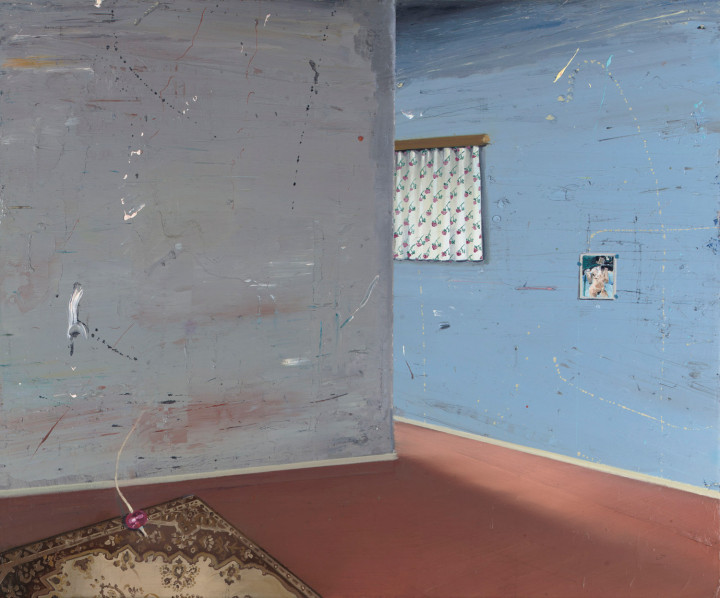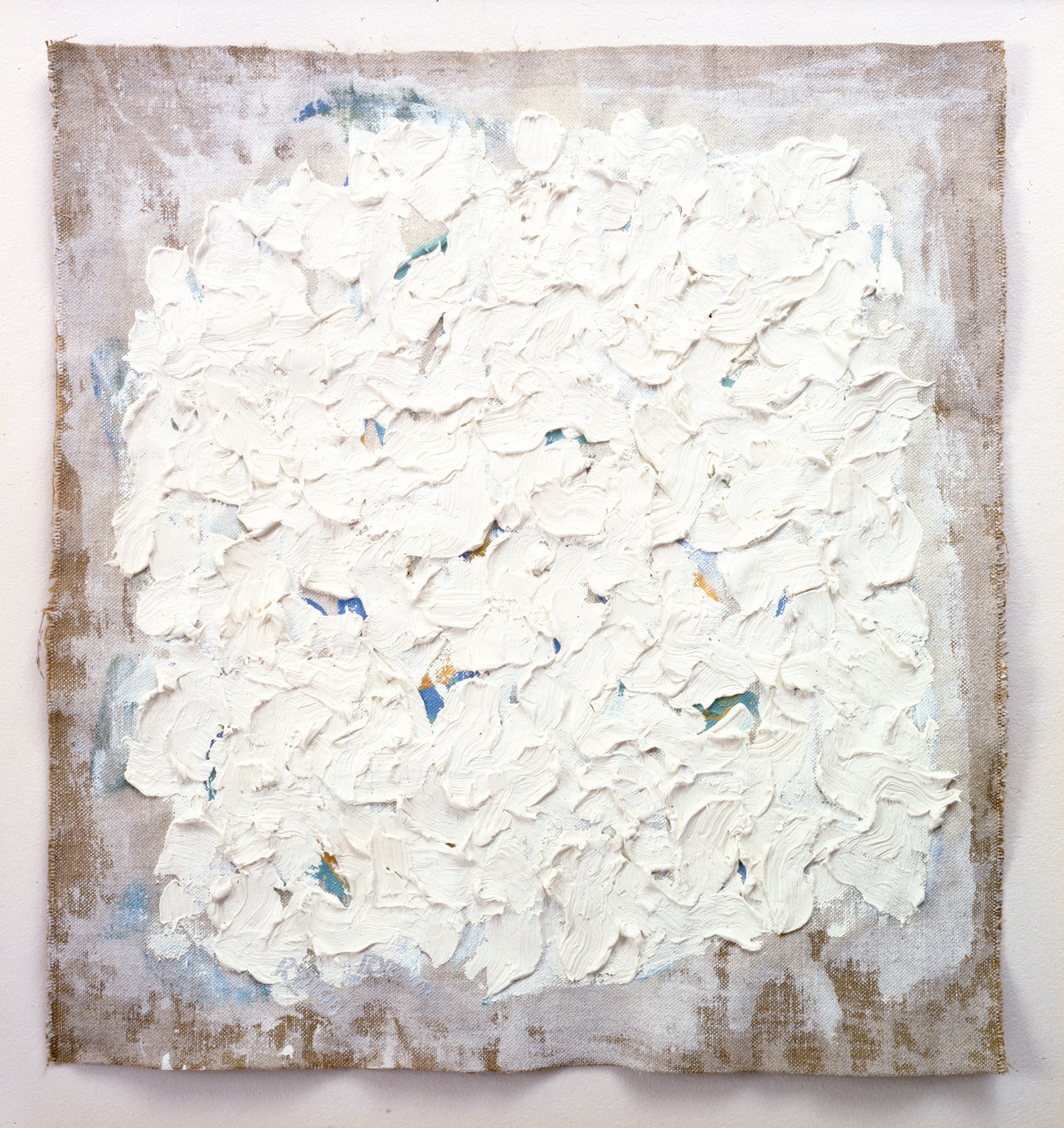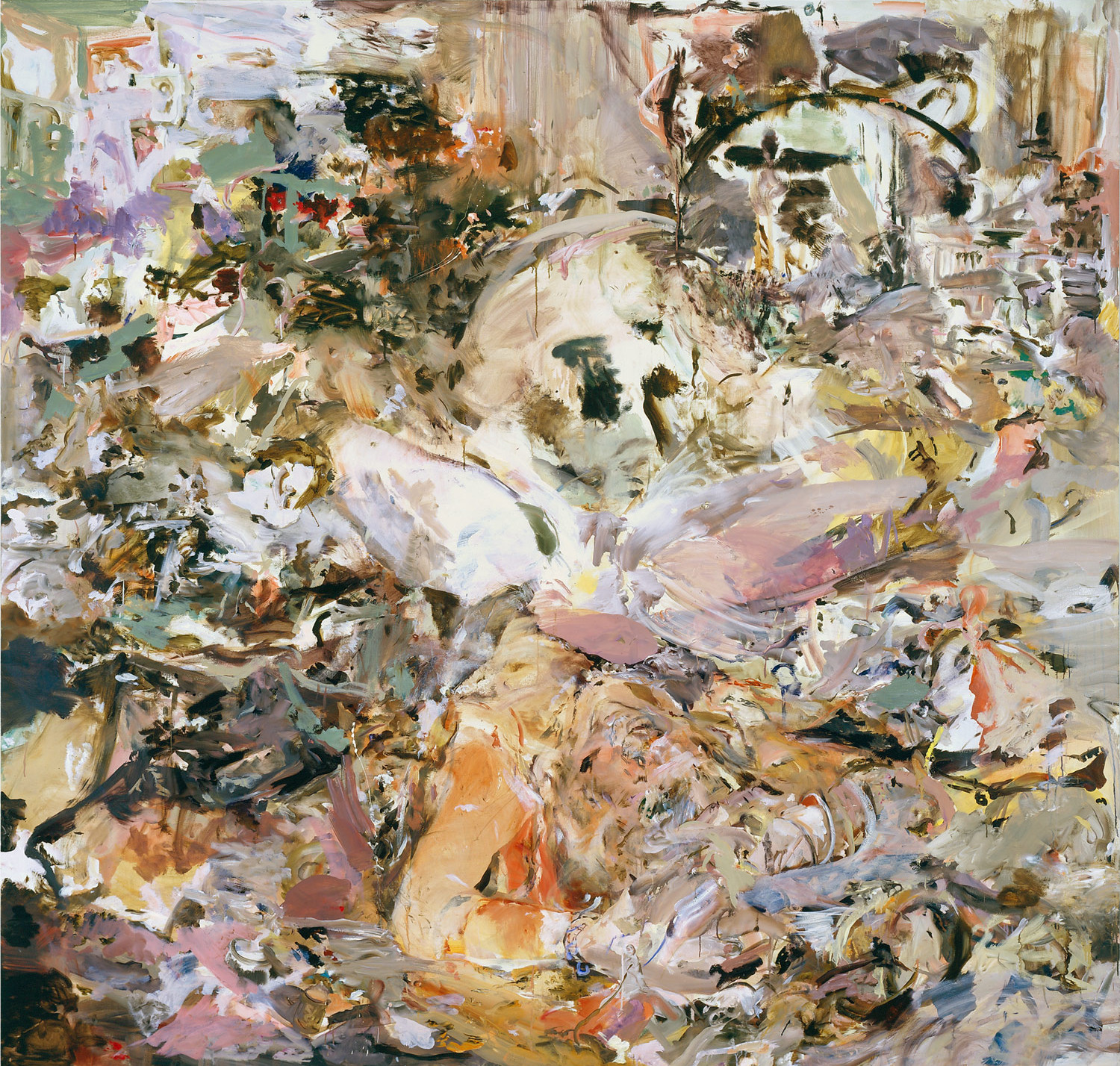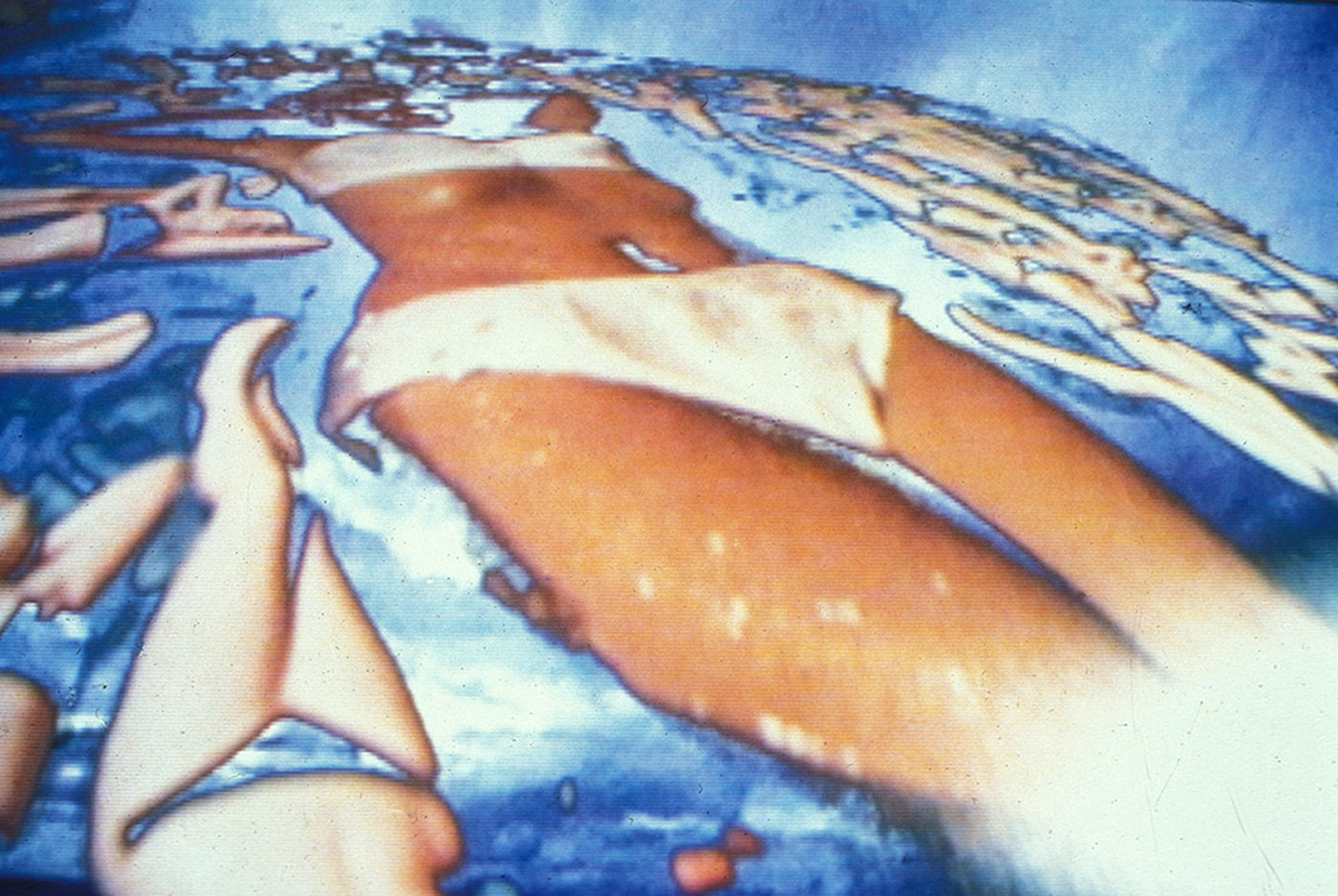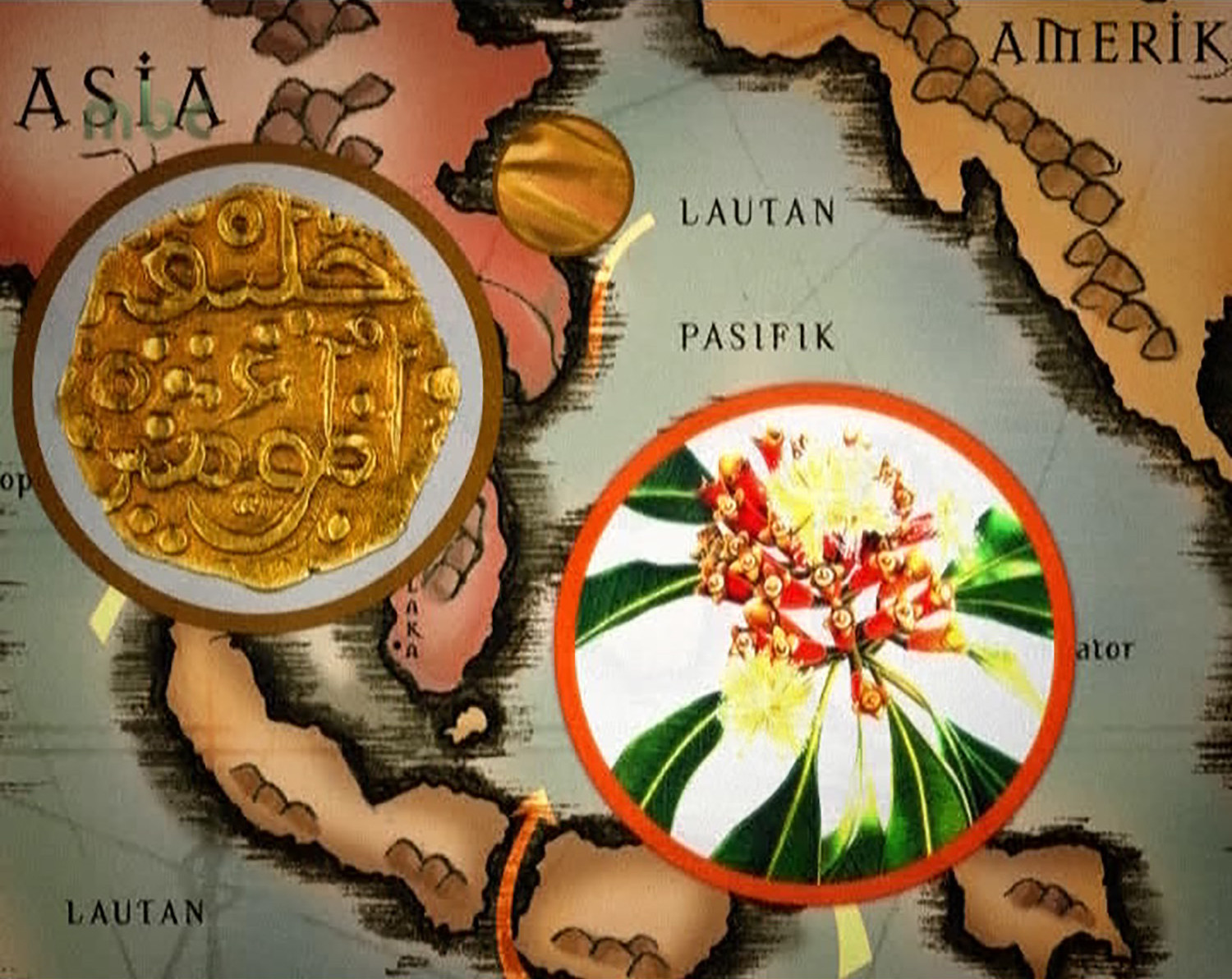
In recent years, we have seen more and more that painting is being marginalized and ghettoized from the higher levels (cult museums, great international events like Manifesta, Documenta, the main Biennials, etc.). Talking about painting with some of the most influential curators makes you run the risk of seeming an anachronism. Let’s not forget the recurrent statement attributed to Duchamp: “Stupid as a painter.”
1. Maybe we can actually talk about painting as a dead language?
2. Is this a kind of cultural terrorism from some snobby curators or the historical obsolescence of a discipline that by now shows its wrinkles?
Dan Attoe
Artist, Portland, USA
I used to hear this every once in a while when I worked at The Walker Art Center in Minneapolis at symposiums and lectures that they’d hold there. It always just seemed like grandstanding on the part of the critic, curator or whoever was saying it. It would be said sometimes in conjunction with, or about, a show that might feature lots of great new paintings (I heard it a few times while working as an installation temp. on “Painting at the Edge of the World”). People involved in the day-to-day art world may feel that they haven’t seen any painting that addresses important issues or does anything interesting or new. That’s a fair assessment. However, to proclaim it “dead” just throws up a red flag to me about that person’s judgment. Every idea has to take some kind of form. People are obviously still using painting to communicate these ideas. So, are their ideas dead too? Can we just look at things without having to worry about whether the form is novel enough? On the other hand, I like saying shocking things sometimes too. People can say “Painting is dead” all they want. I just don’t care.
Jules de Balincourt
Artist, New York
As much as painting may have been riding the wave of the art buying binge of the last five years, it is still often disregarded by a high-minded club of critics and curators who jetset from one biennale to another, with politically and socially minded agendas in hope of shedding light on bigger, broader socio-political issues… and how could painting, the “bourgeois fetishized object,” be a worthy form of communication in a circle possessing socialist agendas and prejudice towards art of excessive monetary value, (ce n’est pas très ’68!). Yet the problem lies in the fact that, as worthy as social agendas may be for Documenta and other notable biennales, much of the work lies in a hermetically sealed realm of art critics, curators and writers who read and write the same rhetoric, forgetting that there is a whole world desperate for pure image unladen with language, “new media” and an elaborate press release, which in turn references theories and philosophies your average viewer knows nothing about. This is the true cultural elitism of the art world, denying a broader public the most democratic and attainable primary art form…
Anselm Franke
Curator, Berlin
It is no wonder that each art form, each medium and its movements, each up and down within a practice and even within its genres have intimate ties with a project. There is no such thing as painting — there are only questions of painting, which make up what I call “a project” as such. But every project negotiates the present through an understanding and, to some extend, radical analysis of the past and the societal context. An art form is alive as long as there is a further radicalization of its project, pushed to further limits, questioning itself. For instance, that’s why the paintings of Gerhard Richter will always matter, while much other current painting will matter less. And it’s true that while painting booms in the market, the negotiation of the past and the societal context have preferably happened elsewhere. The current economic crisis may further help to clarify in the long run why it wouldn’t be a good idea to entirely identify market success and historical relevance, why we shouldn’t follow those who believe that art history (if not history itself) is written by the graphs of sales curves. Or have we given up on the idea of history in the meantime? I think that would be a very depressing idea, because we would have given up on the best of all arguments!

Massimiliano Gioni
Director of special exhibitions, New Museum, New York / Artistic Director, Fondazione Nicola Trussardi, Milan
I think many curators are championing painting. Just think of Hans Ulrich Obrist and his commitment to Gerhard Richter: I don’t even remember how many books of his Obrist has edited. Laura Hoptman has always included painting in her exhibitions and just now devoted great shows to painters as diverse as Elizabeth Peyton and Tomma Abts. Not to mention a curator like Francesco Bonami, who can be considered a devoted supporter of this medium. When he directed the Venice Biennale in 2003, Bonami organized a section entitled “Painting: From Rauschenberg to Murakami,” which was a fulcrum of the entire exhibition. Speaking of my generation, I think what has happened is that the debate painting vs non-painting has become quite sterile. The only problem I see right now is between good and bad art. To be frank, this distinction based upon any medium or technique seems to belong to the past.
Hou Hanru
Director of exhibitions and public programs and chair of the exhibitions and museum studies program at the San Francisco Art Institute.
The question of painting has never been a real problem for me. I don’t think I have a particular opinion about it. In my critical and curatorial practice, I have always been dealing with paintings and painters in a ‘natural,’ therefore, non-decriminalizing way. It’s true that as the main medium of ‘traditional art,’ painting has been seen by our generation as a kind of conservative and even reactionary medium and language. However, in reality, there have always been some innovative painters who continue to challenge the established cannons implied in the language itself, often by means of opening up its space and time limits and emphasizing its corporeal quality and perfomativeness, even mixing it up with other media. Making meaningful and truly exciting painting is difficult because many possibilities related to its power of expression have been exhausted in history and it’s also too closely related to the current confusion of artistic value and market value. But I don’t think it’s dead in an absolute sense, just like any other medium. What is essential is not to isolate painting, or any other medium, as a kind of closed system that should be fetishized or condemned. Actually, working as a critic and curator, one should always be open to all kinds of creative languages and activities, including revisiting some ‘old media,’ such as painting. My experiences have often revealed some wonderful moments when encountering beautiful works in ‘old languages’… and this is a real pleasure.
Jens Hoffmann
Director, CCA Wattis Institute, San Francisco
We are once again talking about the death of painting. How many times have we been here before? Nothing has changed. Seeing a painting exhibition still feels like watching a dance of death. I am afraid that at this point in time not much more can be said about painting that has not in some way or the other been said before. I do not want to dismiss painting on the whole, I just have serious doubts about its ability to progress the development of art. The continuous popularity of painting has a few very simple reasons: 1. Painting still represents and symbolizes in the mind of someone outside the art world what visual art is suppose to look like. 2. The art market loves paintings since collectors like paintings, for them it is art that is understandable and to some degree it also works as interior decoration. 3. The legacy of the medium is quite complex and many artists love the challenge to work with something so rich in history about which apparently nothing new can be said. So my conclusion: Painting is dead, long live painting!

Gianni Jetzer
Director, Swiss Institute, New York
Marcel Duchamp also said: “I don’t believe in art. I believe in artists.” Personally, I do not believe in painting, video or sculpture. I believe in artists. Trends (or their opposite) are for entertainment only and regularly predict a predominance of one media over another. That is not really of interest. There are great painters out there! I love to integrate painting positions in group shows, juxtaposing sculpture with canvas. Sean Landers had three paintings in “Why of Life.” David Perry had one huge canvas in “Good news for people who love bad news.” We have to stop isolating painting from other media. Let’s keep things different and avoid monocultures.
Jordan Kantor
Artist and Associate Professor at California College of the Arts, San Francisco
The idea that painting is dead, or a dead language, is a cliché. Such a formulation would only make sense if a consensus prevailed about what art can be and what it should do. Of course, no such consensus exists, and thankfully instead a proliferation of perspectives predominates. However, this is not to say that I believe anything goes. On the contrary, in my own paintings at least, I feel a responsibility to speak to the present, while remaining cognizant of the past. Since painting has a very particular and loaded history, this is quite a task. Nevertheless, I am constantly excited to look forwards and backwards with the same glance. How we read the past tells us about who we are now and who we aspire to be in the future. Those who limit these possibilities by disqualifying any given form do so at the peril of their own diminishment.

Kika Karadi
Artist, New York
Language is language. Paint is paint. Probably the overuse and repetition of stylized gestures by artists we have chosen to appreciate has become less intellectually stimulating. A lack of evolution in all forms of art is what is unsettling. To me painting is a live medium and very close to my physical destiny as a human. In contrast to the proposed painterly abstraction, I’m interested in a non-progressive but organic system that inherits intelligence from the person looking at it. Kind of like an un-informed realm, where the illusion is interpreted and its perceptual course involves that person’s life experience, memory and mental processes. Whatever medium I use in my research and its specific intention, it doesn’t rely on ‘abstraction from reality.’ Or the even more dispensable and self-referencing, ‘abstraction from abstraction.’ Rather, I construct a quasi-natural space with inherited cursers, which activate emotional triggers when the work is viewed. Like a shard of light that sparks pain or a mental feeling of a lightness. The truth and integrity of a great work of art remains brilliant forever.
Sarah Morris
Artist, New York
Painting is the result of confronting a set of problems. It is a diagram of a series of headaches — political, historical, aesthetic, structural, linguistic and of course, economic. In many cases painting just continues the problem itself. In other words, there is much bad painting to be avoided, just as there is bad literature, film, music and politicians. I don’t think making an argument against form or structure alone leads anywhere particularly interesting. But on the other hand it seems clear that painting must confront the reality of an interdisciplinary approach. There is no point in replicating craft, no point talking about varnish or even Jasper Johns.
Painting is only relevant if it confronts and reflects the conditions of our material reality — now. Otherwise it becomes just fetish of a projected past.

Jane Neal
Art critic and curator, London
Is painting showing its wrinkles? From my perspective it’s never been sexier. Sure it has character and a chequered past, but that’s what lends it its color and vitality. It’s not so much a case of painting having received a rejuvenating injection (although it could be argued that it’s possible to trace an upward curve in its status from landmark shows such as the Pompidou’s brazenly figurative “Dear Painter, Paint Me” in 2002; the Whitechapel Gallery’s “Examining Pictures” in 1999, and The Walker Art Center’s “Painting at the Edge of the World” in 2001); it’s that people are re-realizing its strength as a medium. Look at some of the painters we have working amongst us who cross the generations (these names are drawn from Europe and America — I haven’t even started on Russia, India and China): Georg Baselitz, Tilo Baumgärtel, Michaël Borremans, Brown (Cecily and Glenn), Tom Chamberlain, Peter Doig, Marlene Dumas, Lucian Freud, Adrian Ghenie, Gary Hume, Chantal Joffe, Ellsworth Kelly, Anselm Kiefer, Susanne Kuhn, Victor Man, Elizabeth Peyton, Neo Rauch, Richter (Gerhard and Daniel), Wilhelm Sasnal, Serban Savu, David Schnell, Luc Tuymans, Matthias Weischer. How are these artists baggy or saggy?! Is painting sadly absent from some of the museums? Maybe some of the younger institutions across the world favor multi-media artists, but here in the UK painting is certainly riding high — both London Tates currently feature Bacon and Rothko as their main draws, and Tate Liverpool is gearing up for Glenn Brown.
Adam Pendleton
Artist, New York
Disciplines are an artificial construct. The ‘death’ of a discipline borders on the absurd. It is more important to focus on the validity and urgency of ideas. The image, or the action of images is probably the main thrust of most uninteresting painting. It is increasingly interesting though for the painting to hover somewhere between an image and an idea or the idea of an image.
As someone who works through many media, I perpetualaly return to the surface of the painting as a productive means to challenge dominantly perceived historical narratives through a simultaneously image- and language-based theoretical approach.
Whenever I entertain the idea of painting as a dead medium I always ask myself what did we ask of painting to kill it? You don’t have to make paintings as dumb as a painter.
Daniel Pitin
Artist, New York
Yes, I myself use other media like video or photo collage and I can prove that the reactions of some people differ from their reactions to my paintings. That’s why I am asking these questions and I want to know why nowadays the medium is so ‘important.’ Every medium requires a certain knowledge of the language, but also sensibility, a gift for its interpretation. This is very difficult, because the painters often combine languages and forms without restrain and it is hard to separate and find what is new and what is only repeating. The painting has to be experienced; it cannot just be analytically interpreted. To make an exhibition of painting means to subordinate your own intentions and ambitions to the pictures themselves and to just let them work. I see the role of the curator as supporting and finding the communication between all kinds of the media and trends that appear on the scene. On one hand, paintings are disappearing completely from the big shows like Manifesta or Documenta etc., but on the other the art market is becoming flooded with average art, painting as well. So, what kind of future is today’s art society offering to the painters? To become the slave of the market or to give up painting and think about what we are not going to make?
![Sarah Morris, Black Beetle [Origami], 2006. Courtesy the artist.](http://flash---art.com/app/uploads/2016/08/Sarah-Morris_FlashArt.jpg)
Kirstine Roepstorff
Artist, Berlin/Copenhagen
I don’t perceive the different media as independent from one another — to me they are different tools. Nothing is permanent; content and matter comes and goes. It’s the same for painting, sculpture, performances, etc. Everything keeps falling in and out of fashion and that’s the only way to be, otherwise it would loose its own dynamism.
Beatrix Ruf
Director, Kunsthalle Zurich
I don’t see “cultural terrorism from some snobby curators or the historical obsolescence of a discipline that by now shows its wrinkles,” but rather an emancipation of the medium of painting from its historical and conservative duties to represent ‘art.’ Therefore, there is a rather critical and proportioned use and discussion of it in the context of a contemporary art production, which realizes itself in diverse media, de-hierachized. There are many artists using the medium painting as an intelligent way of creating equally relevant images of today, but there might be, redirecting Duchamp’s statement: “the stupidness of reception,” which desires for orientation and definition by asking for ‘schools’ (the Leipzig School?) and trends (Painting is back?).
Kelley Walker
Artist, New York
I have never considered myself a painter, I might be?

